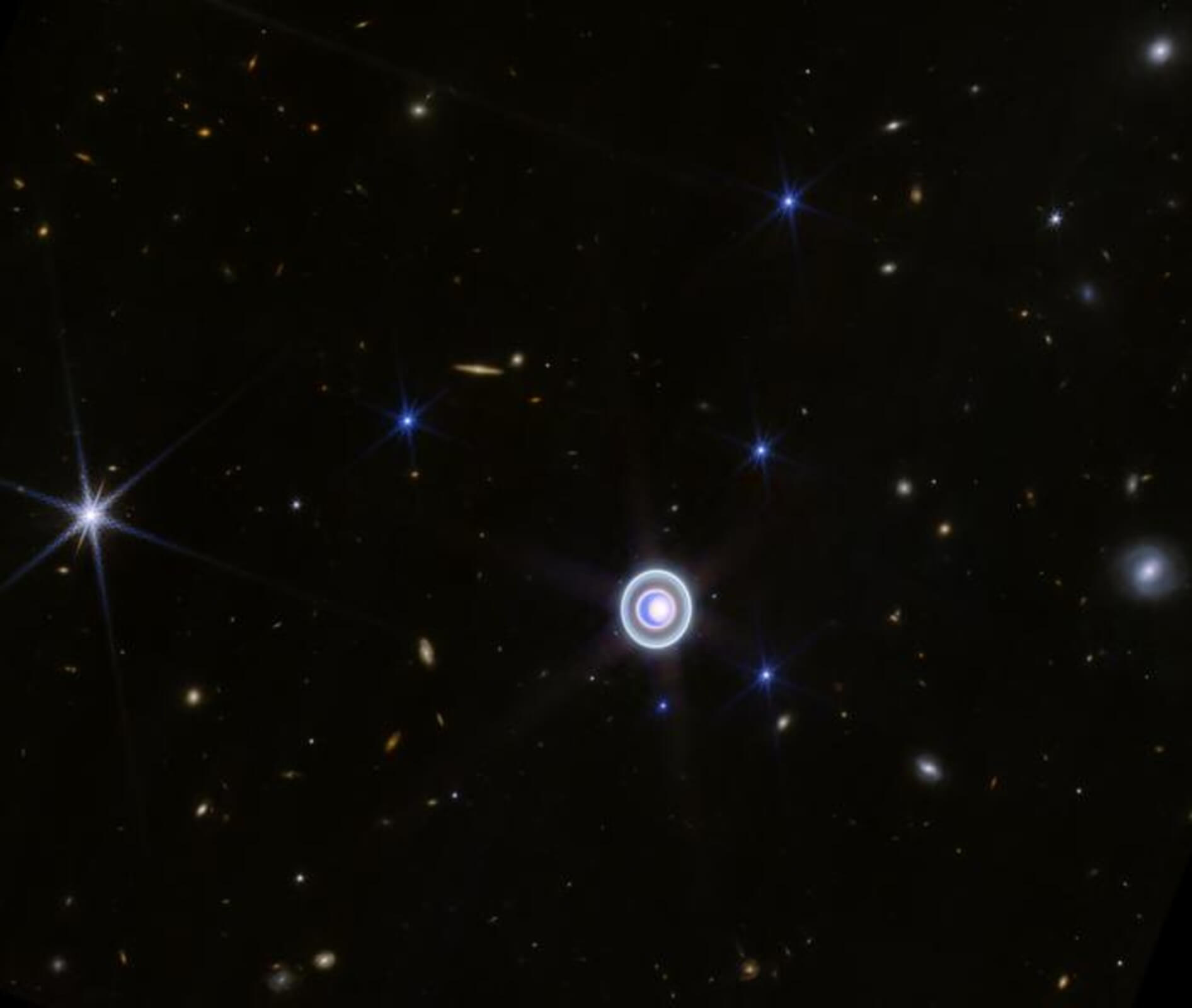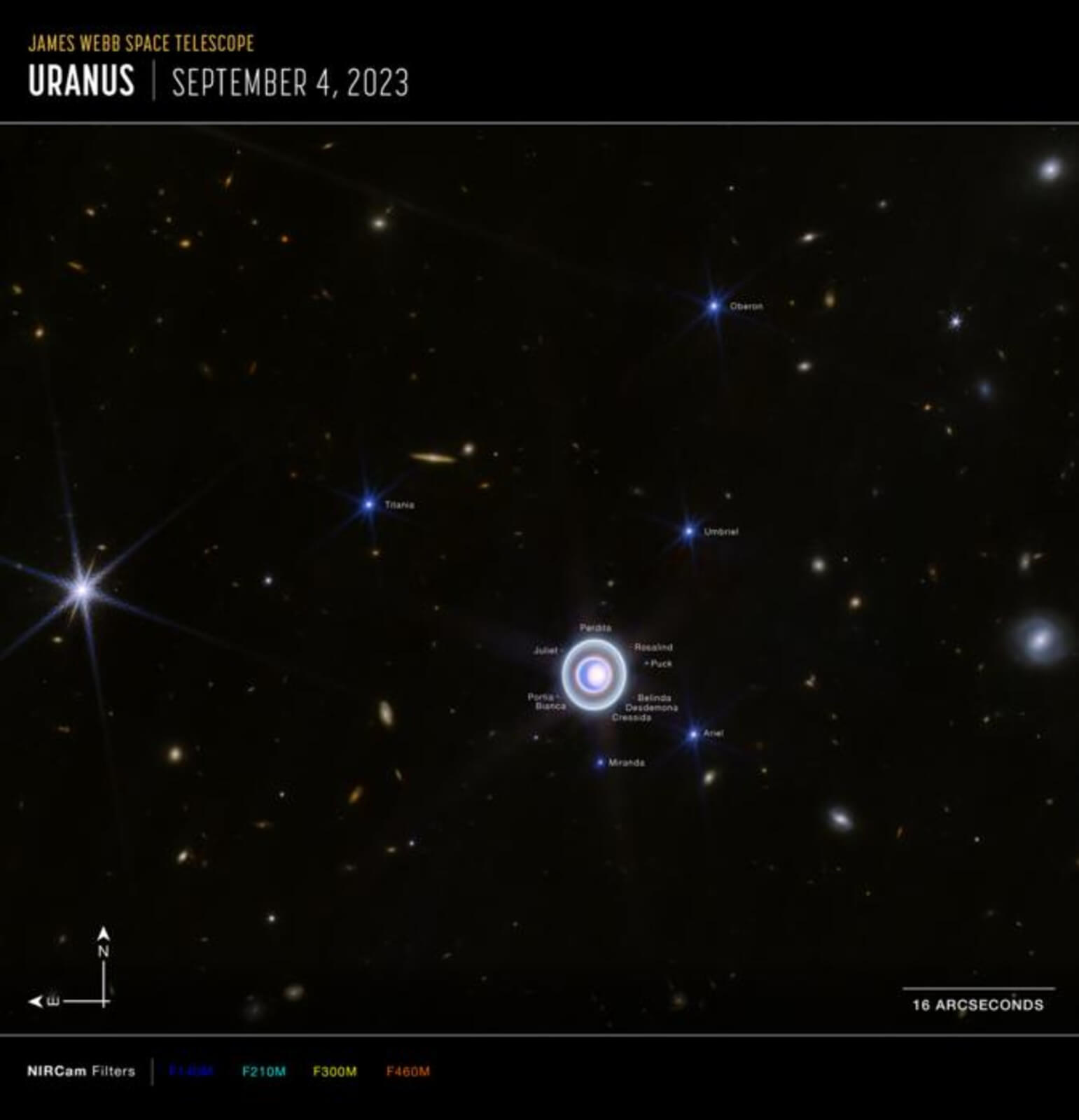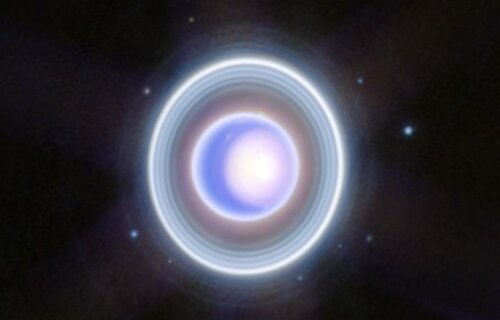GREENBELT, Md. — What better way for NASA to ring in the holidays than to study the mysterious ringed planet Uranus? NASA’s James Webb Space Telescope (JWST) has captured stunning new images of the planet, showcasing its dynamic atmosphere, rings, moons, and a seasonal polar cap.
The latest image from Webb offers a more detailed view than a two-color version released earlier, thanks to its broader wavelength coverage. This enhanced view is providing astronomers with new insights into this distant world.
Uranus, unlike its appearance in the 1980s through Voyager 2’s visible wavelengths as a tranquil blue sphere, is now revealed as a dynamic and strange ice world. Webb’s infrared wavelengths have uncovered several atmospheric features, including storms and a striking north polar cloud cap. This cap appears more defined in the new images, displaying a bright, white inner cap and a darker lane toward the lower latitudes.
Additionally, JWST’s exceptional sensitivity has allowed for the observation of Uranus’ dim inner and outer rings, including the challenging-to-detect Zeta ring, which is closest to the planet. The telescope also successfully imaged many of Uranus’s 27 known moons, capturing even the smaller ones within its rings.

One intriguing aspect of Uranus is its extreme axial tilt of about 98 degrees, leading to the most dramatic seasonal changes in the solar system. For nearly a quarter of each Uranian year, the Sun illuminates one pole, leaving the other in a prolonged 21-year winter darkness. This unique characteristic may influence the planet’s atmospheric dynamics, including the formation and frequency of storms.
Astronomers are particularly keen on observing Uranus as it approaches its next solstice in 2028, which could bring changes in the structure of these atmospheric features. The James Webb Space Telescope, with its unparalleled infrared resolution and sensitivity, is expected to play a pivotal role in dissecting the seasonal and meteorological factors that shape Uranus’s complex atmosphere.

The study of Uranus is not just about understanding a single planet in our solar system. It also serves as a proxy for the nearly 2,000 exoplanets of similar size that have been discovered in recent decades. By studying Uranus, astronomers hope to gain insights into the workings, meteorology, and formation of these distant worlds. This research could also enhance our understanding of the solar system by placing it within a broader cosmic context.
You might also be interested in:
- NASA asking amateur astronomers to help them study Uranus ‘from behind’
- Pluto has a neighbor! Ringed dwarf planet at the edge of our solar system defies laws of physics
- This planet could end life on Earth and unravel the solar system

